Birdlife on the Long Preston floodplain
The River Ribble Site of Special Scientific Interest (SSSI) covers 162 hectares of the floodplain and is of national importance for nature conservation for breeding wading bird populations. The floodplain also provides important feeding and nesting sites for a wide range of other birdlife.
The Long Preston Bird Report 2020 recorded a total of 130 species in the area, of particular note were spotted redshank, osprey, gadwall, great crested grebe, grey plover, water pipit and marsh harrier.
Breeding wading birds
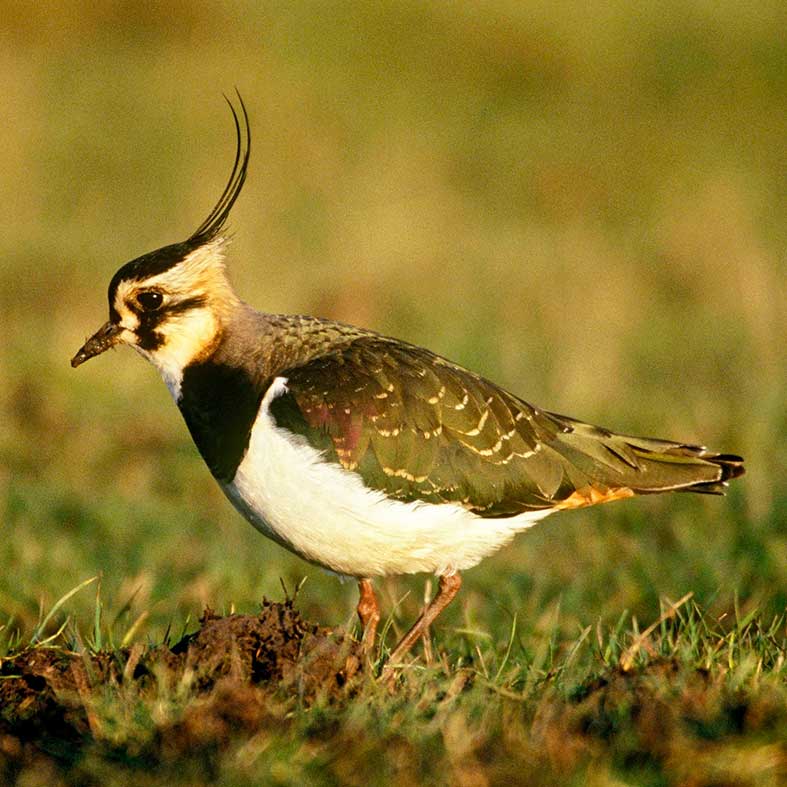
Lapwing - Chris Gomersall (www.rspb-images.com)
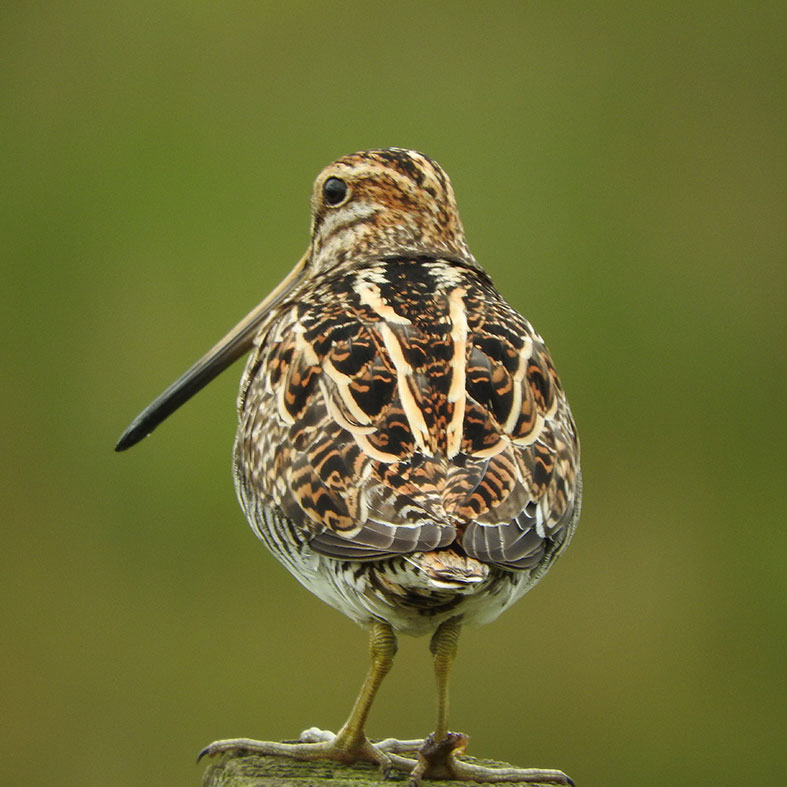
Common snipe - Gareth Jones
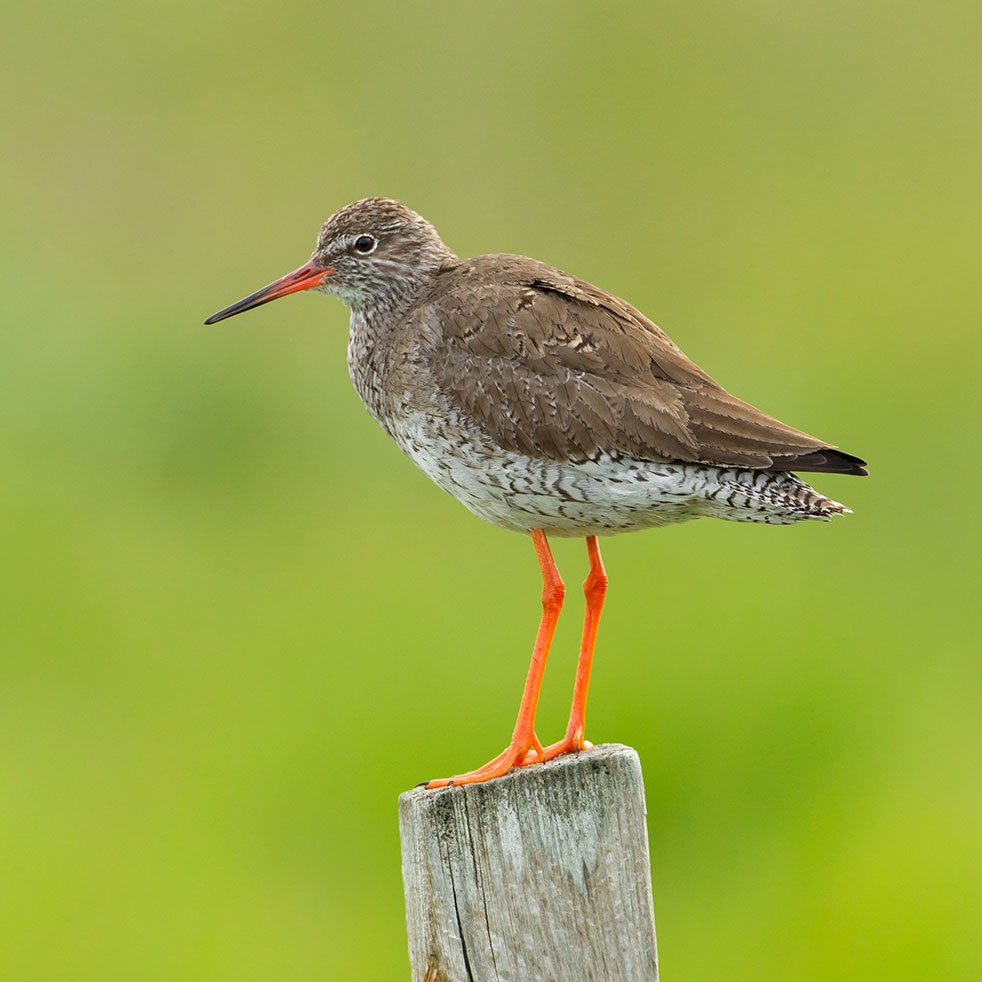
Redshank - Jake Stephen (www.rspb-images.com)
The floodplain is important for several species of breeding wading bird of conservation concern. These birds come to the floodplain in spring every year to nest and raise their young before leaving the floodplain, usually by late July, after their chicks have fledged.
Each of the species has its own unique courtship displays. Snipe display-dive and spread their tail feathers to make an unmistakable drumming sound. Lapwing can be seen twisting and turning in the sky and plunging down to the ground with their distinctive Ôpee-weetÕ call. Curlew with long curved bills, have a drawn-out mournful song. Redshank are less obvious birds but can be spotted by their long red legs and sharp alarm call. Oystercatcher are brightly coloured birds with an orange bill and black and white body. Their voice is very loud especially as they wheel around overhead.
Each species has slightly different habitat requirements to breed successfully. However, they all require access to soft ground, small shallow pools, a variety of grassland heights and structure, low cattle stocking and late cutting of meadows.
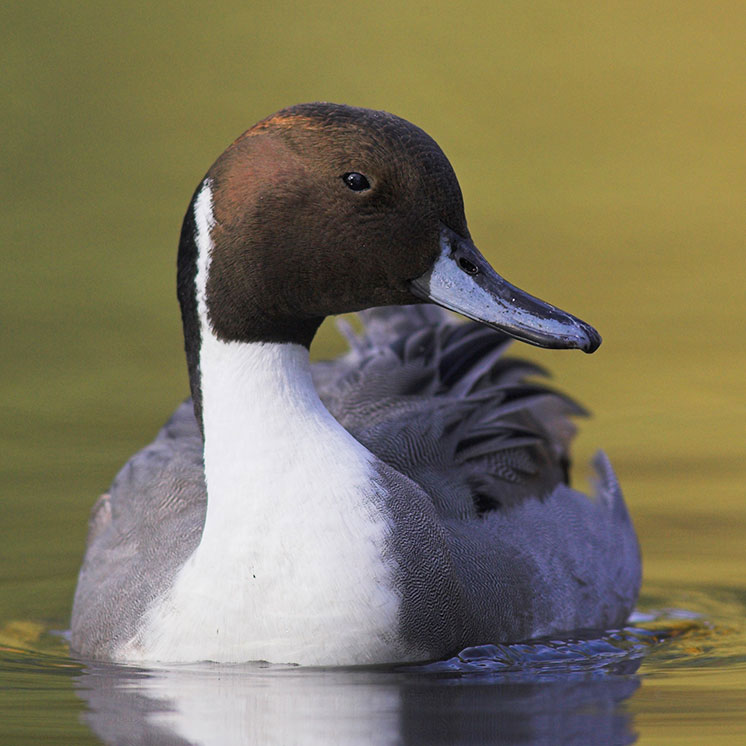
Pintail - Ben Hall (www.rspb-images.com)
Wintering birds
Other species of birds are found here mainly in winter. The wetlands and the river provide them with ideal feeding grounds and sites for roosting. More than 2500 individual waders and wildfowl have been counted in recent winters.
The main wildfowl to be seen here in winter include pintail, wigeon, teal and shoveler. Wintering waders include lapwing and snipe.
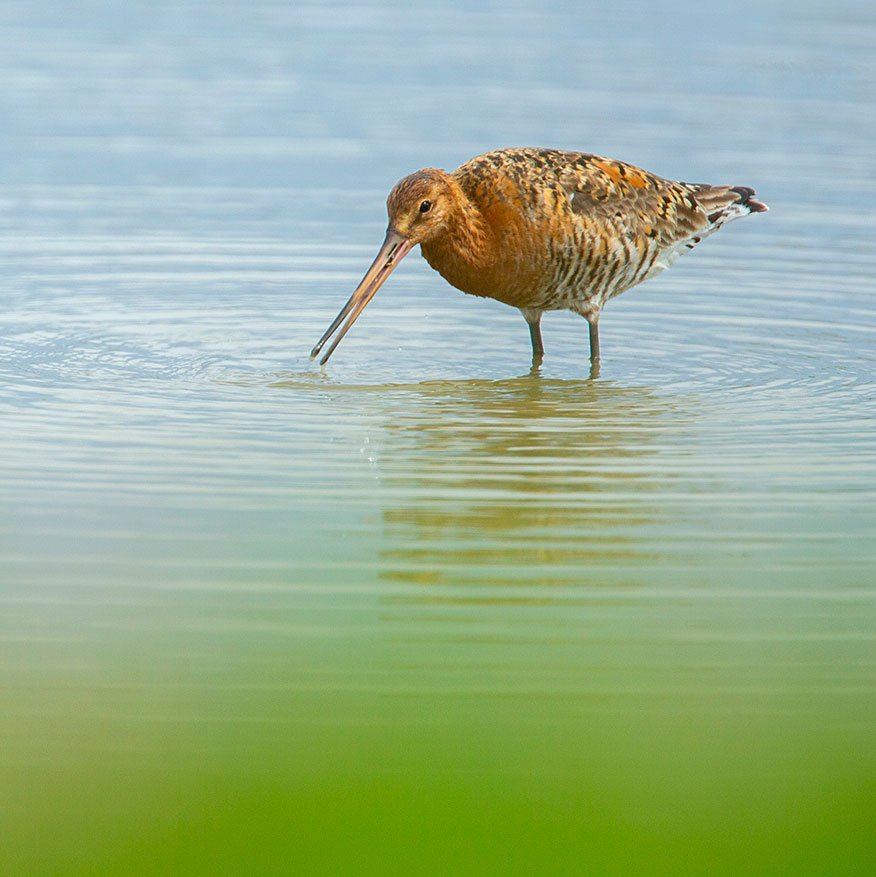
Black tailed godwit - Ben Andrew (www.rspb-images.com)
Migrating birds
Some species of birds do not breed or winter here on the Long Preston floodplain but stop off as they migrate across the country. The floodplain is thought to be on an east-west flyway which explains why it attracts so many bird species.
Such passage migrant species include ruff and black tailed godwit.
Other bird species on the floodplain
As well as being a nationally important site for breeding wading bird populations and a stopover site for migrating birds, the Long Preston floodplain is a haven for other special bird species.
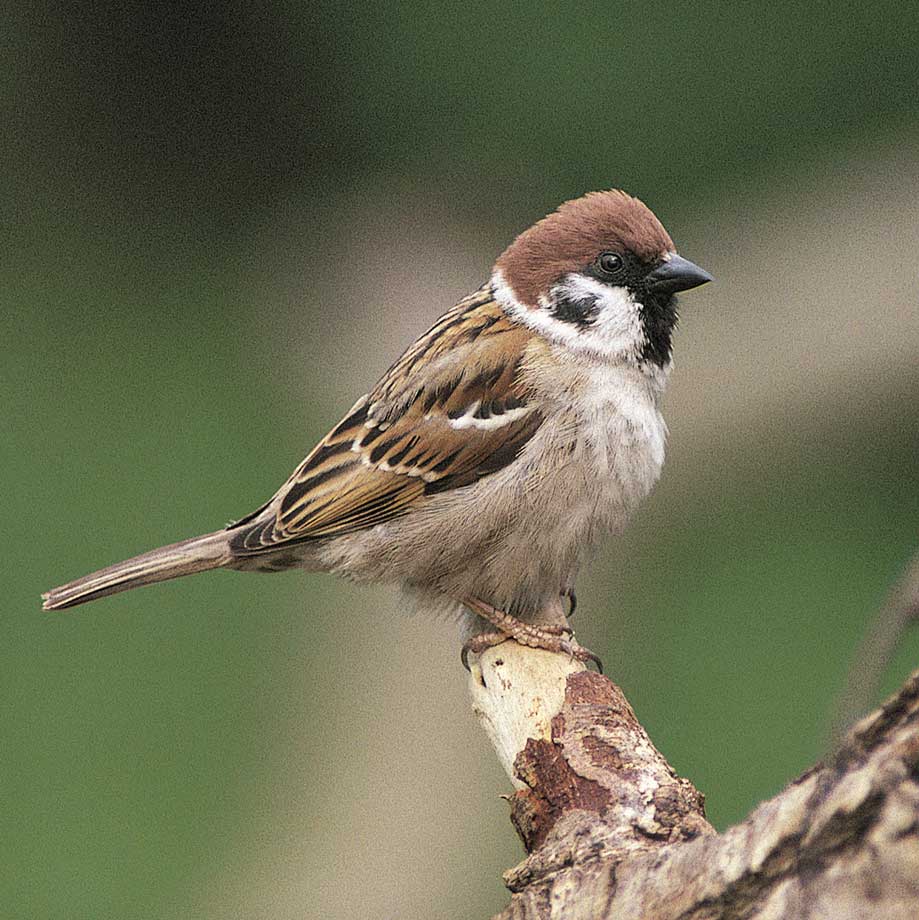
Tree sparrow - Andy Hay (www.rspb-images.com)
Tree sparrows and other species
Near Cow Bridge there is a small breeding population of tree sparrows that lay their eggs in natural nest holes in trees or buildings or in specially provided nest boxes.
In some places on the outsides of meanders the Ribble has high sandy cliffs as its banks. These provide nesting sites for other bird species. Colonies of sand martins nest in holes that they tunnel into the soft sand. Kingfishers also nest in tunnels in the sand cliffs in summer. Goosander lay their eggs in holes in the banks or among rocks on the river edge.
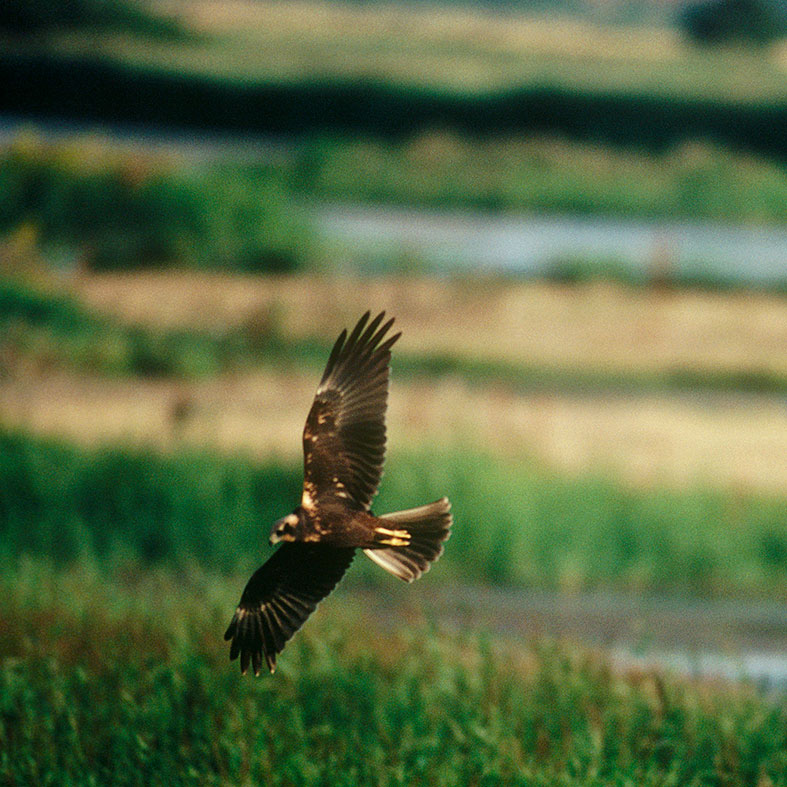 Marsh harrier - Chris Gomersall (www.rspb-images.com)
Marsh harrier - Chris Gomersall (www.rspb-images.com)
Birds of prey
Birds of prey, such as buzzard, peregrine falcon and occasionally hen harrier and marsh harrier, can also be seen in the area.
Find out more about the floodplain
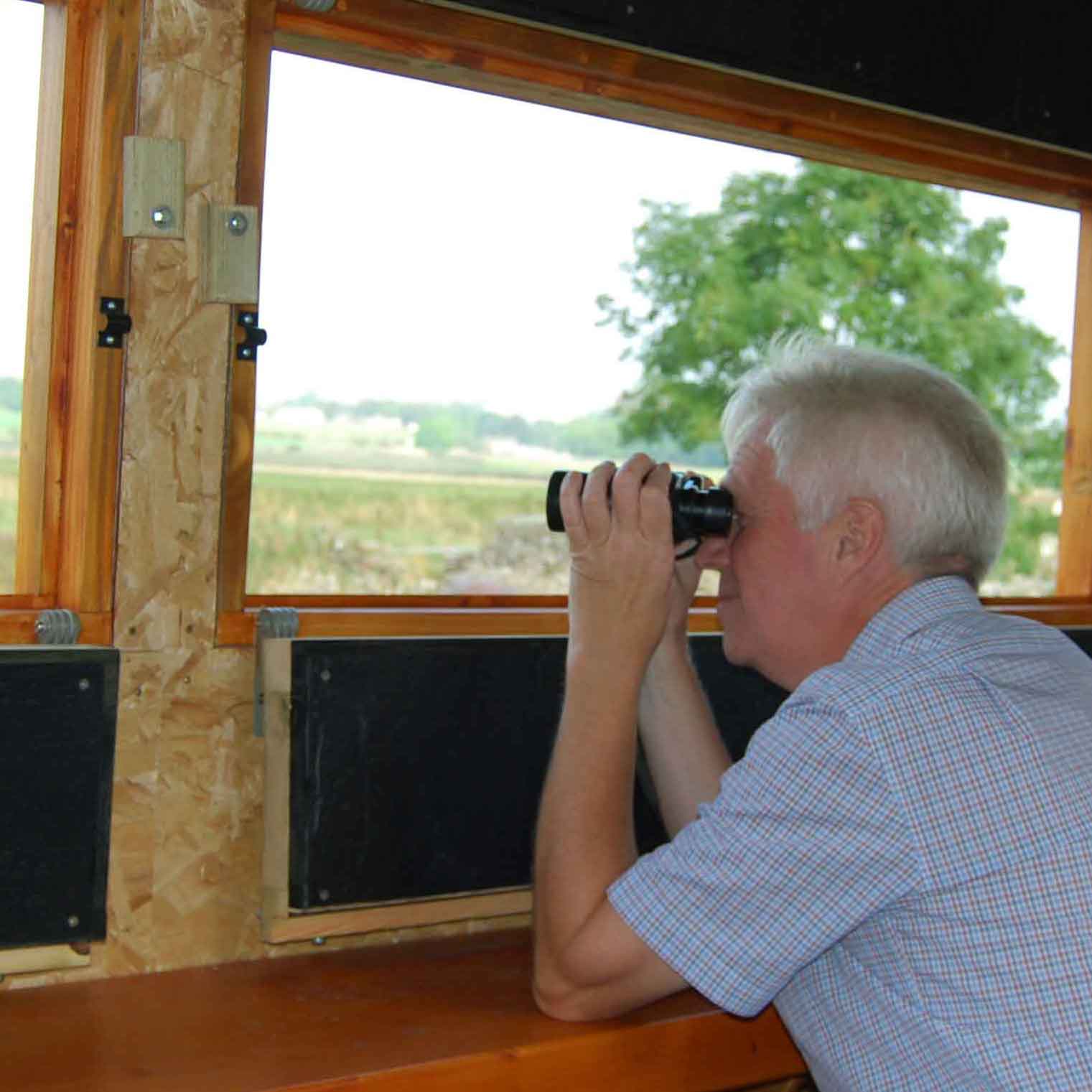
Bird watching in the Long Preston area
There are good opportunities for bird watching on the Long Preston floodplain. A bird hide can be accessed along the Ribble Way, north from Cow Bridge.
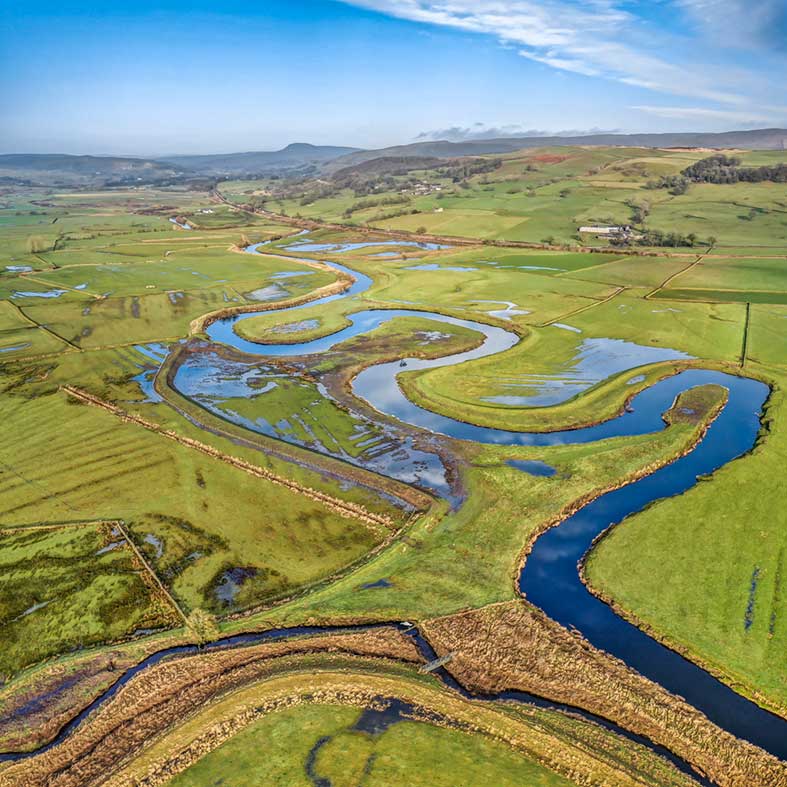
Protecting our wetlands
The Long Preston Floodplain Project is a genuine collaboration between landowners and organisations coming together to create a healthy floodplain.
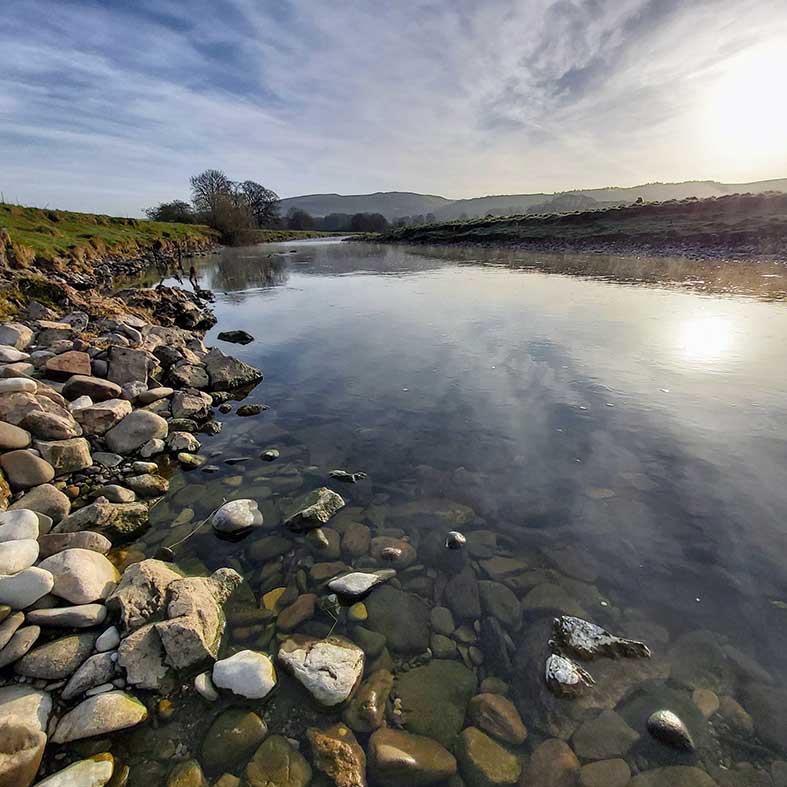
History of the Ribble floodplain landscape
What we see today on the Ribble floodplain is the result of natural processes modified by what people have been doing here for thousands of years.






